.
.
“The Portrait of Felice,” a story by Drew Martyn, was a short-listed entry in our recently concluded 53rd Short Fiction Contest. It is published with the permission of the author
.
.
.
“Woman in Yellow Chair” by James Brewer
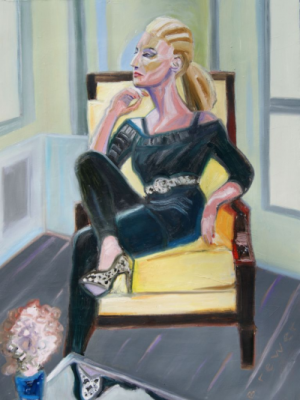
.
.
The Portrait of Felice
By
Drew Martyn
.
…..His face gave it away. Standing in front of the painting, his ice-blue eyes like tiny bejewelled pinpricks, mouth gaping and tongue hanging out, he basked in the portrait’s aura like a skinned lizard under a desert sun.
…..“It’s really her!” he enthused, before his face froze. He hated being so openly emotional, so those thin, unforgiving lips slammed shut and sealed his face again to prevent any further escape.
…..Of course it’s her! Who else could it be? It’s her he asked me to paint: a portrait of his love. A painting to capture her essential beauty.
…..He loved her, in his own way. That was clear to see. Loved her intensely. Insanely. He’d told me so himself, in a rare unguarded moment. I hardly knew him but I understood he kept his inner feelings well hidden. Yet his love for her conquered his reserve, overpowered his suspicious repression and forced him to trust someone else: in this case, me, the greatest artistic forger working today.
…..He’d sweated when he told me what he wanted – sweated profusely.
…..Disconcertingly, his hands had fidgeted in his trousers pockets.
…..But that was then. This is now.
…..“I’m… shocked!” he proclaimed
…..He would be. Very soon.
.
…..“I need something to remember her by,” he’d told me in my studio, standing amongst my creations, swaying where he stood like a slug in Eden’s flowerbed.
…..He demanded the best.
…..That was me.
…..And he’d pay obscene amounts. After all, he’d already spent a fortune just locating me. Credit to him for that: no one else had managed it and I was taken aback when he succeeded. I demanded anonymity: goes with the territory, obviously. As a forger you’d rather not feature on the front of Harpers, Aesthetica or Dolce Vita. Consequently, my studio’s hidden in the basement of a dowdy tenement in a faceless suburb of a nondescript town.
…..But somehow, he found me.
…..And he didn’t knock.
…..“I don’t do commissions of original work,” I told him, “I’m not an artist. I recreate art, now get out.”
…..He looked perplexed: “I was informed you were the best.”
…..Wrong.
…..Sure, I’d recreated Vermeer, Warhol, Caravaggio. My work hung – disguised, obviously- in some famous galleries.
…..I was told you were the best? The fool!
…..I am the best.
.
…..From our brief encounters, I learned something about him.
…..His name: Kolgarov. Alexei Kolgarov.
…..His childhood consisted of too much money, too much loneliness, scant discipline and even less love. Growing up, he needed nothing because as soon as he wanted, he received. This continued into adulthood: money no object, he rarely experienced desire because desire was for the unattainable – and there was nothing unattainable to his wealth. Whatever he wanted, whim or necessity, it was simply a matter of time before he got it.
…..Until Felice.
…..She captivated him, every bone, sinew and emotion. He became animated when he spoke of her. She lived in his heart and his mind, enlivened his thoughts and his dreams.
…..He desired her. Desperately.
.
…..Felice was a worker in stone. With her slight, almost ethereal body, she fashioned artwork as diverse as any who work in the medium. Her works ranked alongside the shaped spaces of Moore or Hepworth, the abstract solidities of Ben Nicholson or the figures of Michelangelo, Epstein or Segal.
…..All stone, be it cement, marble, granite, even basalt, submitted to her hands. Raw stone submitted to her will as if it were already the object she wished to create – it yearned only to be touched by her hands to transform into its true self.
…..With ease, she shaped stone.
…..And, perhaps, destinies.
…..When she first met Kolgarov, he attempted charm and wit to capture her. But his charm, a sickly budding during his childhood years, soon wilted through lack of effort and nourishment. It blackened through disuse. A soupcon remained, but it was febrile, twisted and decayed, bitter to the taste and lacking in any of the finer qualities. His wit, similarly rooting its growth during young teenage years, found its loam salted by easy money. It was dead before he was twenty, and its passing was mourned by no one for none saw that it had ever existed.
…..Felice rejected him.
…..She just wasn’t interested. They’d met in Monaco, at a Society do, and though he was handsome, he was a little dull.
…..Truthfully?
…..Classically handsome.
…..But interminably boring.
…..His smile was captivating; his demeanour bordering on tepid. But those azure eyes were less like the sea, full of life and motion, more like a blue ceramic tile: beautiful, but hard and cold to the touch.
…..His conversations centred on wealth and how he spent it. Felice was unimpressed. Yet she saw his emotion, understood it but couldn’t respond, so she agreed to just one thing: sitting for a portrait, for him to remember her by.
…..And that’s where I came in.
.
…..I don’t know how Kolgarov persuaded me, but he succeeded: more than a year ago I agreed to work with Felice. She sat for me: I painted her.
…..I still look back and wonder how that happened.
…..I have a price, I guess.
…..Every artist has a price; and I’m not an artist, so my price is higher than most. I used this twisted logic on him. He knew it was twisted logic… but he agreed my price.
…..Make her live for me, he urged.
…..Oil on canvas, an everlasting creation of absolute beauty.
.
…..Felice had tried hard not to hurt Kolgarov.
…..She understood rejection: her mother had left her and her father when she was six years old. At fourteen she ran away from home, forced not by a father who blamed and despised her for her mother’s desertion, but by the sting of continuous rejection that overwhelmed her every waking moment.
…..She found work in an animal sanctuary. And when she began creating stone shapes for the animals to play on, she realised she had never been happier.
…..She’d learned to live with hurt and, while doing so, discovered her gift. Faced with a shapeless lump of cement, Felice had no idea what she’d create, but her hands caressed the tools and the stone responded.
…..First, decorations for the animal enclosures, so impressive that she made her first sale at the age of fifteen.
…..After that, animal statues.
…..Then abstract shapes; then people.
…..She studied hard, funded by her sales, and her reputation grew.
…..Exhibitions sought her work, museums asked to borrow.
…..It wasn’t just her talent they sought. They sought the indecipherable life she imbued every statue with. Like a painting whose eyes follow the observer around the room, her statues seemed sentient, magically aware that they were being looked at and admired.
.
…..Felice sat patiently for the portrait, day after day, week after week, and her presence blossomed on the canvas, and within my mind.
…..It grew slowly. Not the cataclysmic eruption of a mountain thrust upwards by violent tectonic forces, but the soft, slow, gentle emerging of a whole range of distant peaks at dawn, made glorious by a sunrise that almost painted them into existence.
…..She moved with a silent grace and when she spoke she spoke quietly. But it’s the silent rivers that hold the strongest currents.
…..And the sun rose. And her river flowed. And I found I couldn’t swim.
.
…..Some portraits of Felice came agonisingly close to completion before I destroyed them. And Felice understood! When we discussed what constitutes art she understood that forgery, of itself, could never be true art, because art was more than talent iterated. It was more than a quintessence of sitter and artist. The truth’s in the work and the work’s in the sitter: the artist can be glimpsed through the sitter’s eyes. True art becomes greater than the sum of all its talents, all of our talents on both sides of the easel.
…..And then, one day, I allowed her to see.
…..That’s the problem with original art. You bear witness to beauty with your own eyes, not another’s: but the price for this is overwhelming.
…..When I recreated an Old Master I became that Old Master: I knew them and their secrets intimately. I’d add something of my own to the painting, of course, something that would explain why my creation had lain “unrecognised” for “centuries”; but it would be something perfectly in keeping with the time…
…..Because all that did was act as a disguise.
…..It hid the real me.
…..But through this portrait I’d revealed to Felice and the world my innermost self.
.
…..Art isn’t life. Life isn’t art.
…..Simplistic statements that I repeat to myself from time to time.
…..I’ve long ago foregone the “does art imitate life or life imitate art” debate. It’s meaningless. Life is transition; art is stasis.
…..Transition in life is decay. Transition in art only occurs in the Medium, the canvas or the stone.
…..And then Felice asked “Could the human body be the medium?”
…..Which suggests that the soul could be the work of art.
…..She asked it as a question, but in reality it was a prompt. To make me think.
…..I didn’t know.
.
…..“Does she like the portrait?” Kolgarov asked. I nodded.
…..“Good,” he said. “I want her to like it. It must be the last thing she sees me with.” His head leaned towards me, seemed to extend closer to my face as if his neck was stretching out. The warm moistness of his breath flannelled my lips and I smelled stale coffee.
…..“It’ll be the last thing she sees,” he whispered.
…..I drew away, uncomfortable.
…..“I mean, sees me with,” he corrected.
…..Then he said, “Have her meet me here tomorrow. You, too, of course. I want you to see.”
…..Abruptly he left, leaving me wondering if I’d imagined his dark intention.
.
…..I stared at Munch’s “Deathbed” and contemplated murder, attempting to understand Kolgarov.
…..I’d completed this copy years ago – the previous completed efforts I’d stared at, just like this, and decided they weren’t good enough so had destroyed them.
…..Now, to me, there is a close correlation between destroying a life and destroying a painting. Who would want to keep something that would slowly decay over seventy years? Wouldn’t you choose the creation that lasts seven hundred years over one that lasts only seventy? Sure you would. Beauty demanded it. Art demanded it.
…..Life demanded it.
…..Perhaps even I, too, demanded it.
.
…..We met as instructed.
….. Kolgarov arrived first. He walked in slowly and an hour early, and he was hot, sweating as if he was late. He couldn’t sit down, his obvious agitation wouldn’t allow it. His movements were jerky and graceless and his hands fidgeted in his jacket pockets. Every now and then I caught sight of a knife blade.
…..I watched his mouth twitch. His eyes darted to a covered easel.
…..“Is that it? The portrait?”
…..I nodded. ” I thought it would be theatrical to have a formal unveiling,” I said. My words felt childish and empty.
…..“Appropriate.” he said and, for the first time, smiled.
…..There is something hollow about a smile when you know that the person beside you is about to kill someone.
…..“She will leave me,” Kolgarov whispered, “sooner than she realises.” He continued, as if to ensure I’d understood his unspoken meaning, “But she won’t find anyone else. Ever.”
…..His eyes smiled his cold tile smile. “But I will always have my portrait to remember her eternal beauty. Always.”
…..He laughed, then bowed before me.
…..“I apologise,” he said, his hands coming together in supplication, “You have not yet presented it to me! It is not yet my portrait, is it?”
…..Somewhere, deep inside, a voice spoke to me. It was timid, and difficult to hear above the raucous noise of the traffic outside and the silent noise of Kolgarov’s agitation and the white noise of my past and the red noise of my potential future, and the colours of my paints, all their noises: all condemning.
…..I heard the voice say: “Murder is evil.”
…..And because I was beginning to understand Kolgarov and why he wanted the portrait, I replied silently: There’s no such thing as Evil. Just actions, with consequences.
…..Then: “All life is destruction,” I said aloud, and Kolgarov smiled for a second time.
.
…..Felice knocked politely as always, but this time she hesitated at my studio door. Kolgarov saw her and signaled her in but she waited for me to step towards her, kiss her awkwardly on the cheek and step aside to let her pass. Rather self-consciously she walked to the far side of the studio, positioning herself as far from Kolgarov and myself as possible.
…..“It’s a beautiful day,” I said.
…..She smiled, then said
…..“I hope you like his work, Mr Kolgarov.”
…..“I do. Given that I paid an extraordinary amount for it, it’s an even greater compliment to him.”
…..Watching him sidling close to her, his discomfort and agitation obvious, his handsome but vacant face intent on the covered easel in front of him, it was difficult to reconcile the man with his intentions.
…..Just by looking at him he could have been labelled dull; unintelligent; unimaginative; his glacial emotions statuesque in their inability to add life and movement to his bland appearance.
…..Yet he was more. Somehow, from the stagnation of his character he summoned the will to murder, to destroy that which he loved.
…..The ice of his intent in some strange way gave heat to his passion.
…..He moved the easel into the middle of the room and set a chair in front of it. I don’t think Felice noticed his hands trembling as they positioned the chair. A drip of sweat formed on the end of his nose and he thumbed it away before wiping his wet forehead with his handkerchief.
…..“Here,” he instructed. “Sit here, Felice.”
…..Hesitantly she smiled and took her seat in front of the portrait as he walked behind her.
…..“This is how I want to remember you. With the portrait – my portrait of you – and you sitting before it.”
…..Kolgarov’s voice quavered as he spoke, I couldn’t tell if it was excitement, fear or both. He shifted his weight from foot to foot, his head shook slightly from side to side as if he had palsy, but his hands –
…..His hands flew erratically between his pockets, where they fumbled with the knife, to his face, wiping off the sweat that ran in rivulets down his skin. A jewel of white dribble or sweat gathered at a corner of his mouth, though his lips were dried and cracked.
…..If he was going to strike, it would be now. As he’d planned.
.
…..Kolgarov, standing behind Felice, wiped sweaty hands on his clothes then put them on her shoulders. Felice appeared to shrink a little under the touch.
…..“Mr Kolgarov,” she sounded confused, “You’re trembling!”
…..His forced laugh accompanied him removing his hands.
…..“I apologise. It is excitement. Excitement at the portrait’s imminent unveiling.”
…..He mentioned “unveiling”. That word was my cue. I was to release the cloth cover, watch as it fell to the floor, see the delight on both their faces, see Kolgarov take the knife out of his pocket. Watch it flash across her throat.
…..My cue: I ignored it.
…..He stood. She sat. I waited.
…..Motionless.
…..The way Kolgarov had removed his hands from Felice’s shoulders, the way he held them trembling in the air as if they’d been burned, I knew he wouldn’t be able to kill her.
…..I had to commit the murder.
…..“Come!” I said to Kolgarov.
…..To Felice I ordered “Remain seated.”
…..I wanted my words to Felice to sound authoritative, offhand and callous. I wanted them to be as brutal as I knew I was about to be.
…..A slight downward movement of the corner of her mouth was her only discernible response, but I knew my words had hit home.
…..I led Kolgarov into a side room.
…..And Felice remained, silently, on her altar.
.
…..I had to do it.
…..I explained:
…..Universal law affirms that every action has an opposite. Every creation has destruction; all growth has entropy. I had created; ergo, it was my duty to destroy.
…..His relief was palpable.
…..“I would do it, you know,” he reassured himself. “I’ve done it before. Vladivostok, 2012, I – ”
…..“I don’t want to know.” I stopped him. His story didn’t interest me. Nothing about him interested me anymore. But the cycle must be completed. What must be, must be. This was my obligation.
…..“It is my duty.” I told him. “My art insists on it.”
…..He took the knife out of his pocket and carefully passed it to me. He’d stopped sweating. He’d stopped shaking. His face, once pale, grew… less pale. A smile spread over his face. The way it spread, it reminded me of mildew.
…..“Will this require a further donation?” he asked.
…..“What?”
…..“Will you require payment?”
…..Blood money.
…..I smiled. It wasn’t genuine. It was a mask to hide my revulsion.
…..“No,” I replied. “All part of the service.”
…..He went to shake my hand, but it was the hand holding the knife.
…..“Careful,” I said, “Don’t want to cut yourself.”
.
…..Gathered again in front of the covered easel, I began an unprepared speech.
…..“I’m delighted to present this portrait to Mr. Kolgarov…”
…..I watched him smirk: he may as well have been a Felice statue, I thought, his body rigid, his eyes half-closed, his smile enchanting to anyone who didn’t know him.
…..“Felice, I thank you for being an excellent sitter. Your beauty… ” my words failed me at this point. I tried to convince myself that it was because of what I was about to do and not because of the trust in her eyes.
…..Tried. But failed.
…..A silence framed us. Kolgarov stood at one side of the easel, sideways onto it, myself the other, similarly sideways onto it. Directly before it sat Felice.
…..The portrait itself was covered by a layer of muslin which in turn was covered by a square of tarpaulin, both tethered at the top corners of the easel by plastic string.
…..I took the knife out of my pocket.
…..Kolgarov, his eyes wide and his tongue lolling over his dry lips, was unashamedly excited.
…..I cut once.
…..Felice breathed a little faster.
…..Twice.
…..The tarpaulin fell to the floor.
…..Kolgarov gave an animalistic, almost sexual grunt.
…..The empty space between myself and Kolgarov, between Felice and the easel, seemed to me to be alive, to bristle, like the hair on a cat’s back when it’s frightened. The portrait’s darker tones could be discerned through the thin muslin, but no detail.
…..For some unknown reason, I made a cross shape with the blade of the knife in that electric space.
…..Felice looked from Kolgarov to the easel.
…..Her beauty was truly stunning.
…..And transient.
…..Then I cut once.
…..Twice.
…..The muslin fell to floor.
…..And Felice, in her utter and unattainable beauty, was revealed to us all.
…..The portrait showed Felice sitting on a plain hardback chair. Light poured down from a window in the upper right, illuminating most of her face which was turned slightly towards it, as if her attention had been momentarily distracted by something or someone outside. She held a plain glass sand-timer: this was my conceit. It showed the sand almost run out, time almost up. A simple allusion to the transience of beauty and life itself.
…..But what beauty! And what life! Somehow, I had captured her, irrevocably and completely. Kolgarov moaned, as if overcome.
…..Felice smiled.
…..Then Kolgarov gasped “Now!” his voice hoarse.
…..There was no time to think.
…..All beauty ultimately bends to destruction. That was beauty’s function: to end, to cease to be. Decay was God and was with God. Entropy was the ultimate force, the Omnipotent Being.
…..Godot’s woman: all beauty is born over an open grave.
…..But beauty didn’t have to be subject to decay: it could end, could cease, in beauty. To remain eternally beautiful. At its pinnacle.
…..The haft in my hand felt soft and warm. Malleable.
…..I touched the blade.
…..Cold.
…..Kolgarov repeated, his voice trembling “Do it! Do it now!”
…..There was no time to think.
…..Entropy. Decay. Had to be stopped.
…..Now.
.
…..I held the blade to my lips.
…..Kissed it.
…..A silence tangible as cold steel filled the space between Kolgarov, Felice, myself and the portrait.
…..The blade swooped in my hand.
…..It entered at Felice’s throat, effortlessly, with little resistance.
…..I dragged the blade to the left and right in spasmic jerks, then quickly down through her left breast to the left side of her abdomen. With a deft twist I turned the blade through forty-five degrees and tore left, then upwards through her stomach back to her throat.
…..The canvas fell forward, limply, onto the floor.
…..Kolgarov’s face was a picture.
…..Eyes wide, mouth agape, an otherworldly gurgling came from his throat. His hands waved about in front of him like blinded snakes, his body seemed to shrink: there was no anger, no sorrow, nothing but abject and total confusion.
…..Felice was already standing, moving her chair backwards as we had planned, to allow me more room.
…..Kolgarov, at this moment, would make an amazing portrait study.
…..But this was no time for study.
…..Only time to act.
…..And in one movement I stepped forward and forced the blade through his ribcage and into his heart.
.
…..There are many kinds of beauty, as there are many kinds of decay.
…..I’d love to say I’d only just realised this truth, just in time to save Felice.
…..To say so would be to give everything that had happened an air of spontaneity, of a domineering Fate intervening: the universe unfolding as it should without human interference. Most importantly, leaving no blame, no responsibility, on me or Felice. We’d be absolved of Kolgarov’s murder.
…..But that would be wrong.
…..Because we both knew from the very start that the only truly lasting beauty was our relationship.
…..That was our enduring work of art.
.
…..That was many months ago.
…..Since then, Felice worked with stone to encase Kolgarov, together with some cleverly put-together chemicals to eliminate his body. The result is a handsome statue, but one which, sadly, lacks enough real character to be put on display. And so it lies in a corner of the basement of our new home.
…..As for Felice and I, we and our new baby lie dozing in bed. We called her Novello-Felice, because she was conceived the day we finished Felice’s final portrait – a copy of which now hangs in our lounge and draws admiring comments from our closest friends.
…..The original is hidden, unrestored, behind it in the frame. It is the only work I’ve completed that will never be put up for sale, and it remains the only true work of art I’ve ever made.
.
___
.
.
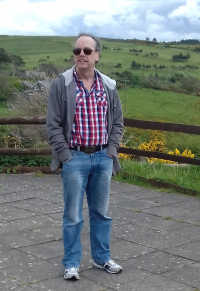
.
Drew Martyn and his family live in Wales, UK, where he enjoys music, writing, soccer and real ales (in any combination). He’s had fiction published in a number of print anthologies, magazines and online and has a published in Soteira Press‘s “What Monsters Do For Love” anthology. In the past he’s also contributed articles and conducted interviews for a UK soccer website. If asked about inspiration and favourite writers, he’d witter on forever about Ray Bradbury, William Trevor and especially Georges Perec, so probably best not to ask…
.
.
.
.
.






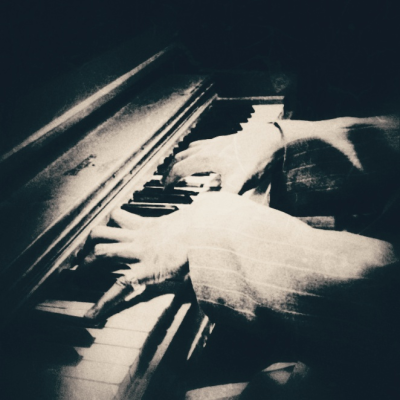

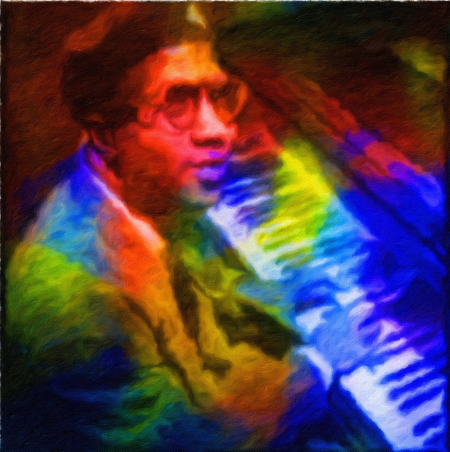
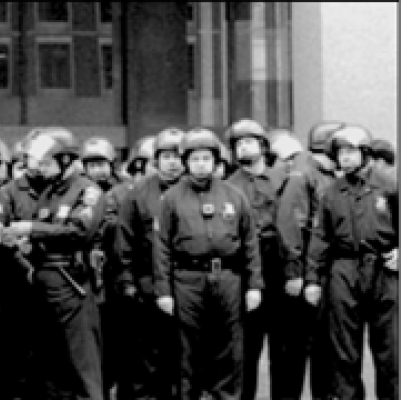




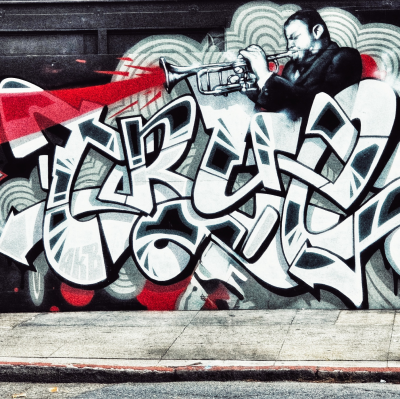





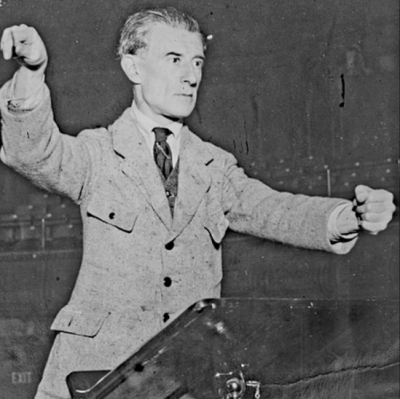

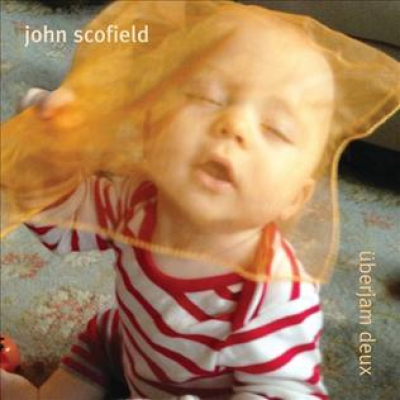






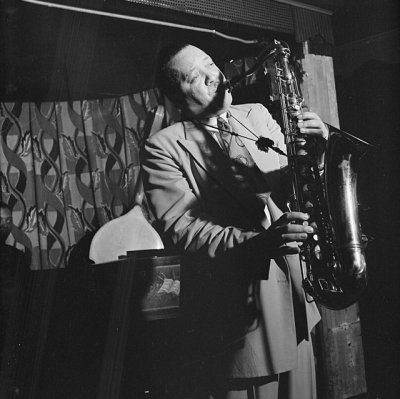

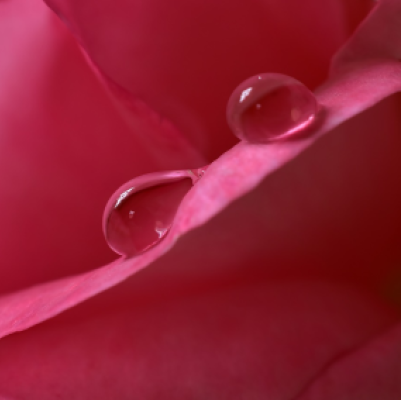
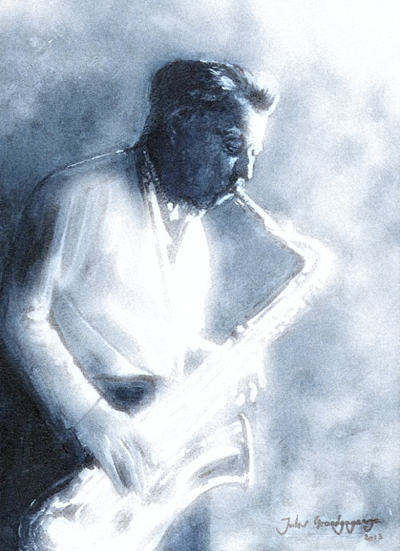










Tops! The best! Got me at his unforgiving lips slamming shut stopping any more releases of emotion and carried me through to the terrific end which was also pretty gross. This will stay with me a long time, thank you.
I don’t usually comment on stories online, but honestly this one and Portrait Of Felice were wonderful. I mean they are all good (credit to Mr or Ms Editor) but those stories transported me totally, and I’ve come back to read them both for a third time. (or it may be fourth, I’m losing count hehe)
I copied this from another story, They Could Be Anywhere by Emma Deshpandle
This is a fabulous story from a terrific writer. This is the second time of reading, but from idea to execution (!) I was riveted.
I’m not a great fiction reader – prefer factual, especially environmental and space-science – but a friend in night class gave me the link and she said I should read this.
I’m so glad I did, and I’ve recd it to other people now. It’s interesting, informative (sometimes in places it reads like a history of art to me) and (SPOILER) there’s a clever twist in the middle that really got me hook line and sinker. A great read. More please, JJM.